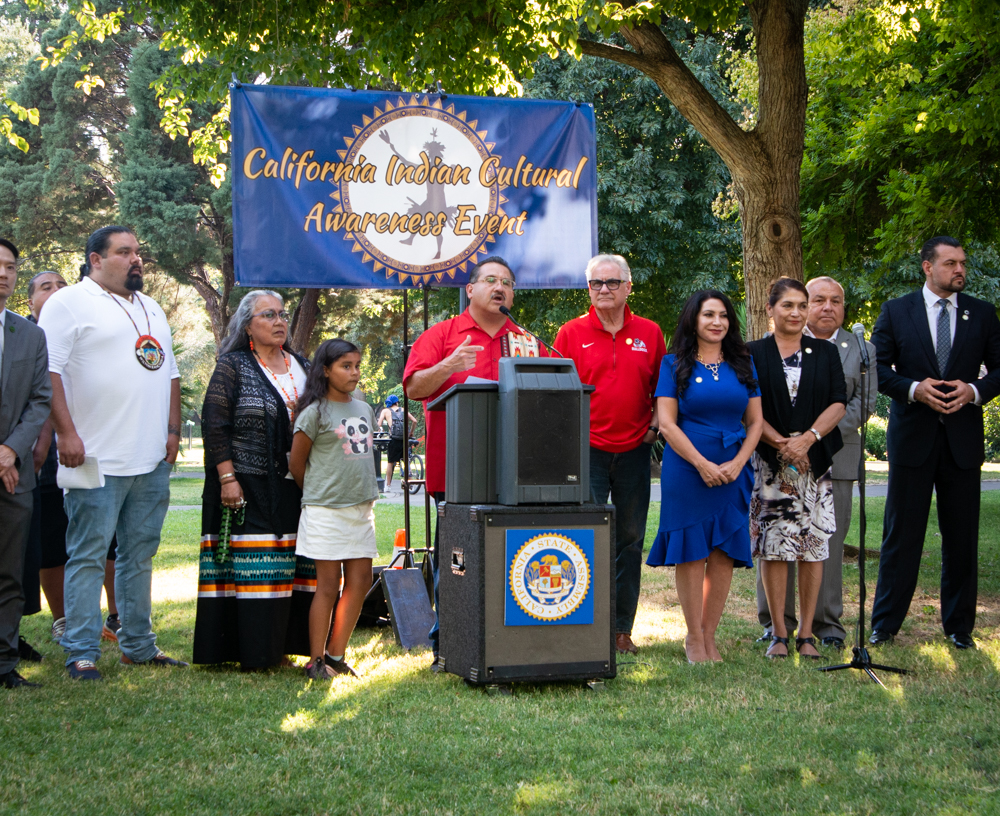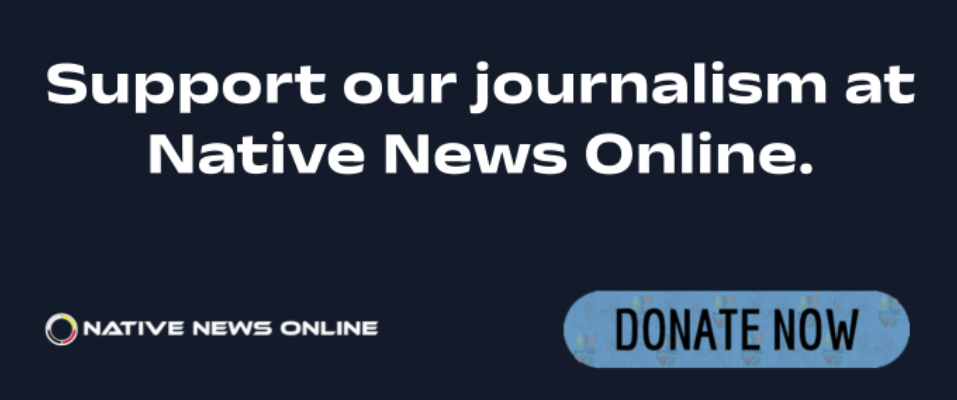
- Details
- By Rich Tupica
SACRAMENTO — Under a 100-degree California sun, a crowd of around 120 people, including lawmakers and community members, gathered on August 16 for the 4th Annual California Indian Cultural Awareness Event, which celebrates the state’s Native American people with performers, leaders and tribal members.
The colorful evening event, hosted and sponsored by Assemblymember James C. Ramos (D-San Bernardino), was held Monday in Capitol Park, which surrounds the California State Capitol. Northern, Central, and Southern California Native Americans shared their history through stories and traditional songs. The Shingle Springs Traditional Dancers, announced by Chairwoman Regina Cuellar, also performed. A full stream of the event is here.
Ramos, who represents California’s 45th Assembly district — which includes Fontana, Highland, Mentone, Redlands, Rialto and San Bernardino — is the first and only California Native American serving in the state’s legislature. He chairs the Assembly Committees on Rules. Ramos said the event was created to boost awareness of their communities.
“It’s built to bring the knowledge of California’s first people through song, music and history to the legislature, but also the community as a whole,” Ramos said during his opening remarks. “Upon coming into the state legislature, through the assembly, it was evident that education still needs to take place from within the halls of the legislature about who we truly are as California Indian people—about our songs and our history.”
Throughout the evening, Yurok Tribe Chairman Joe James and Council Member of the Santa Ysabel Band of the Iipay Nation Dr. Stanley Rodriguez (who delivered a Kumeyaay cultural presentation), offered up both history and captivating personal stories of their people, including the still-fresh wounds brought on by Indian Boarding Schools. Raven Casas, a San Manuel Youth Committee member, returned for the second year as a presenter. She discussed her efforts to bring more awareness to Missing and Murdered Indigenous People. Over the past four years, she said she’s “testified at hearings, stood with tribal leaders from across our state, worked with our local coroner’s office and organized a 5K walk a run.”
During his closing remarks at 7 p.m., Ramos, a lifelong resident of the San Manuel Indian Reservation and member of the Serrano/Cahuilla tribe, offered up some of his ongoing concerns and hopes for the near future.
“What you’ve heard from each speaker, and the songs being sung, isn’t just something that’s here because of today. This is stuff that’s ingrained in us,” Ramos said. “When we talk about Missing and Murdered Indigenous women and Indigenous persons, it’s not something new to our people. It’s been happening, happening during the colonization period, and it still goes on today. California now sits as the fifth of unsolved and uninvestigated murders against Native American people.”
Another area Ramos said needs immediate attention is the state’s education system. He noted past Native events, ones with devastating consequences, are being glossed over or flat-out disregarded.
“Much of the history you’ve heard today doesn’t reach the history books in our local regions,” he said. “You’ve heard from the speakers about relocation—relocation from their ancestral territory to another place. We need to get to a point where California is open to hearing about the true history and, many times, the dark history that needs to be told in our classrooms (and to) our local people.
“In San Bernardino, we’ve been running a program at Cal State San Bernardino for over 20 years and still, to this day, there are people that don’t even acknowledge or believe that a 32-day battle took place in the San Bernardino Mountains in 1866—to rid the mountains of Indian People,” he added. “That’s when our clan, the Yuhaaviatam clan, dwindled down to less than 30 members—almost wiped off the earth. Yet, that’s not being taught. As a matter of fact, it gets challenged whether it’s true and valid. These are issues we need to work on together as a caucus and as people in the state of California, to bring the true history forward and break down misconceptions.”
Today, there are some positive things in motion happening in California. A statue of colonizer John Sutter was removed in June 2020. Squaw Road is being renamed since “Sqauw” is a slur against Native women, created by colonizers. Beyond that, three local schools are also ditching the names of colonizers as their namesakes. But the work is far from over, according to Ramos. He said happenings like the California Indian Cultural Awareness Event serve as a reminder that progress is still needed.
“You’ve seen the different dancers and cultures being shared here today,” he said at the event. “Yet a lot of people within the education system try to paint all Indian people into one idea of what we should look like, what we should sing, and what we should say. But what you’ve seen here today (proves the diversity). The message is clear: it’s not about history. We’re still here sharing our culture, sharing who we are, and teaching our young people to be that voice moving forward. It’s time for the state of California, and the Native American Legislative Caucus, to continue to move pieces of legislation forward.”
More Stories Like This
Native News Weekly (August 25, 2024): D.C. BriefsUS Presidents in Their Own Words Concerning American Indians
Ethics Complaint Alleges Former Navajo Nation Chief of Staff Accepted Gifts From Contractor
Monday Morning (December 14, 2025): Articles You May Have Missed This Past Weekend
Native News Weekly (December 14, 2025): D.C. Briefs
Help us defend tribal sovereignty.
At Native News Online, our mission is rooted in telling the stories that strengthen sovereignty and uplift Indigenous voices — not just at year’s end, but every single day.
Because of your generosity last year, we were able to keep our reporters on the ground in tribal communities, at national gatherings and in the halls of Congress — covering the issues that matter most to Indian Country: sovereignty, culture, education, health and economic opportunity.
That support sustained us through a tough year in 2025. Now, as we look to the year ahead, we need your help right now to ensure warrior journalism remains strong — reporting that defends tribal sovereignty, amplifies Native truth, and holds power accountable.
 The stakes couldn't be higher. Your support keeps Native voices heard, Native stories told and Native sovereignty defended.
The stakes couldn't be higher. Your support keeps Native voices heard, Native stories told and Native sovereignty defended.
Stand with Warrior Journalism today.
Levi Rickert (Potawatomi), Editor & Publisher

